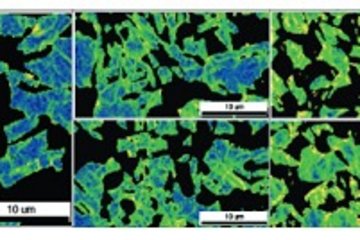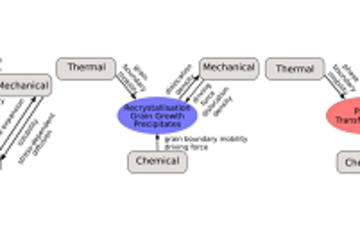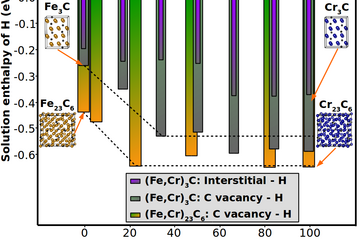All genres
1.
Journal Article
Dislocation mechanisms and mechanical behavior of highly concentrated Al-Mg (6.6 and 9.3 at.%) binary alloys. Intermetallics 187, 108981 (2025)
2.
Journal Article
Interfacial segregation of carbon atoms: the competition between grain boundaries and phase boundaries. Scripta Materialia 268, 116842 (2025)
3.
Journal Article
The dual role of boron on hydrogen embrittlement: example of interface-related hydrogen effects in an austenite-ferrite two-phase lightweight steel. Acta Materialia 299, 121458 (2025)
4.
Journal Article
Prediction of reversion kinetics in medium Mn steel by linking real experimental data with diffusion simulation. Materials and Design 258, 114631 (2025)
5.
Journal Article
Dual-scale chemical ordering for cryogenic properties in CoNiV-based alloys. Nature 645 (8080), pp. 385 - 391 (2025)
6.
Journal Article
Improving hydrogen embrittlement resistance of martensitic steel via interface B segregation. International Journal of Hydrogen Energy 164, 150954 (2025)
7.
Journal Article
Temperature and misorientation-dependent austenite nucleation at ferrite grain boundaries in a medium manganese steel: role of misorientation-dependent grain boundary segregation. Acta Materialia 296, 121242 (2025)
8.
Journal Article
Exceptional high-temperature corrosion resistance of multi-component alloys via modulating Al and Nb. Corrosion Science 253, 112990, p. 112990 (2025)
9.
Journal Article
Thermodynamics-guided design of sustainable secondary Al-Si alloys for enhanced Fe-impurity tolerance and optimized Mn doping. Acta Materialia 289, 120932 (2025)
10.
Journal Article
Using Spinodal Decomposition to Investigate Diffusion Enhancement and Vacancy Population. Advanced Science 12 (14), 2412060 (2025)
11.
Journal Article
Interfacial boron segregation in a high-Mn and high-Al multiphase lightweight steel. Acta Materialia 283, 120568 (2025)
12.
Journal Article
Segregation at prior austenite grain boundaries: The competition between boron and hydrogen. International Journal of Hydrogen Energy 95, pp. 734 - 746 (2024)
13.
Journal Article
Ultrastrong and ductile steel welds achieved by fine interlocking microstructures with film-like retained austenite. Nature Communications 15 (1), 1301 (2024)
14.
Journal Article
Multifunctional high-entropy materials. Nature Reviews Materials 9 (12), pp. 846 - 865 (2024)
15.
Journal Article
Circular Steel for Fast Decarbonization: Thermodynamics, Kinetics, and Microstructure Behind Upcycling Scrap into High-Performance Sheet Steel. Annual Review of Materials Research 54 (1), pp. 247 - 297 (2024)
16.
Journal Article
Atom probe tomography-assisted kinetic assessment of spinodal decomposition in an Al-12.5 at.%Zn alloy. Acta Materialia 268, 119757 (2024)
17.
Journal Article
How solute atoms control aqueous corrosion of Al-alloys. Nature Communications 15 (1), 561 (2024)
18.
Journal Article
Optimizing site-specific specimen preparation for atom probe tomography by using hydrogen for visualizing radiation-induced damage. International Journal of Hydrogen Energy 50 (Part A), pp. 165 - 174 (2024)
19.
Journal Article
On the formation and growth of grain boundary k-carbides in austenitic high-Mn lightweight steels. Materials Research Letters 12 (1), pp. 10 - 16 (2024)
20.
Journal Article
In-situ investigation of the interaction between hydrogen and stacking faults in a bulk austenitic steel. Acta Materialia 262, 119441 (2024)











